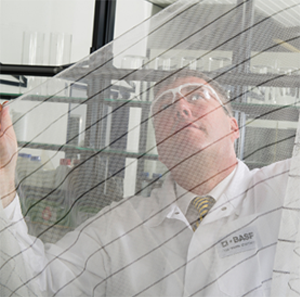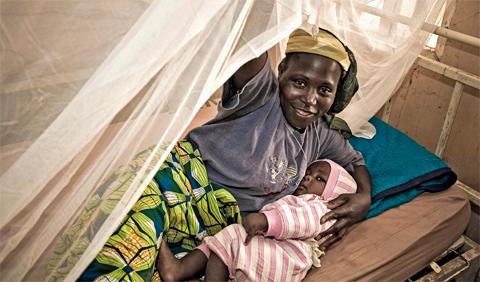 Creating chemistry for a sustainable future
Creating chemistry for a sustainable future
Combating malaria
Every two minutes, somewhere in the world, a child dies from malaria. There are more than 200 million new cases every year. Malaria is also a major cause of global poverty and its burden is greatest among the most vulnerable.
Long-lasting insecticide-treated mosquito nets and indoor residual sprays are the cornerstones of malaria prevention, particularly in sub-Saharan Africa. However, continual use of the same insecticides has enabled the highly-adaptable mosquito to develop significant levels of resistance.
 Interceptor® G2 from BASF is the first WHO-recommended mosquito net based on non-pyrethroid chemistry to beat insecticide-resistant mosquitoes.
Interceptor® G2 from BASF is the first WHO-recommended mosquito net based on non-pyrethroid chemistry to beat insecticide-resistant mosquitoes.
 Its distinctive black and white stripes distinguish it from currently used mosquito nets.
Its distinctive black and white stripes distinguish it from currently used mosquito nets.
 Most cases occur in Africa, but other regions are significantly affected: Latin America, South East Asia, Western Pacific and Eastern Mediterranean.
Most cases occur in Africa, but other regions are significantly affected: Latin America, South East Asia, Western Pacific and Eastern Mediterranean.
BASF has received an interim recommendation from the World Health Organisation (WHO) for Interceptor® G2, a new long-lasting insecticide-treated mosquito net based on chlorfenapyr to combat insecticide resistance. This is the first WHO recommendation for a product based on a new insecticide class in more than 30 years.
 There are more than 200 million cases of malaria each year and almost half a million deaths. Infants, children under five and pregnant women are the most vulnerable groups.
There are more than 200 million cases of malaria each year and almost half a million deaths. Infants, children under five and pregnant women are the most vulnerable groups.
Working with the Innovative Vector Control Consortium and the London School of Hygiene & Tropical Medicine in a collaboration lasting more than a decade, BASF’s scientists successfully repurposed chlorfenapyr to be effective on mosquito nets and meet stringent WHO performance thresholds for public health. Chlorfenapyr works by disrupting the insect’s ability to produce energy. Field trial results show that the mosquito net protects sleepers and combats insecticide-resistant mosquitoes effectively.
Depending on local registration processes, the new mosquito net, whose distinctive black and white stripes distinguish it from other treated nets, is expected to be available to health ministries and aid organisations starting from the beginning of 2018.



